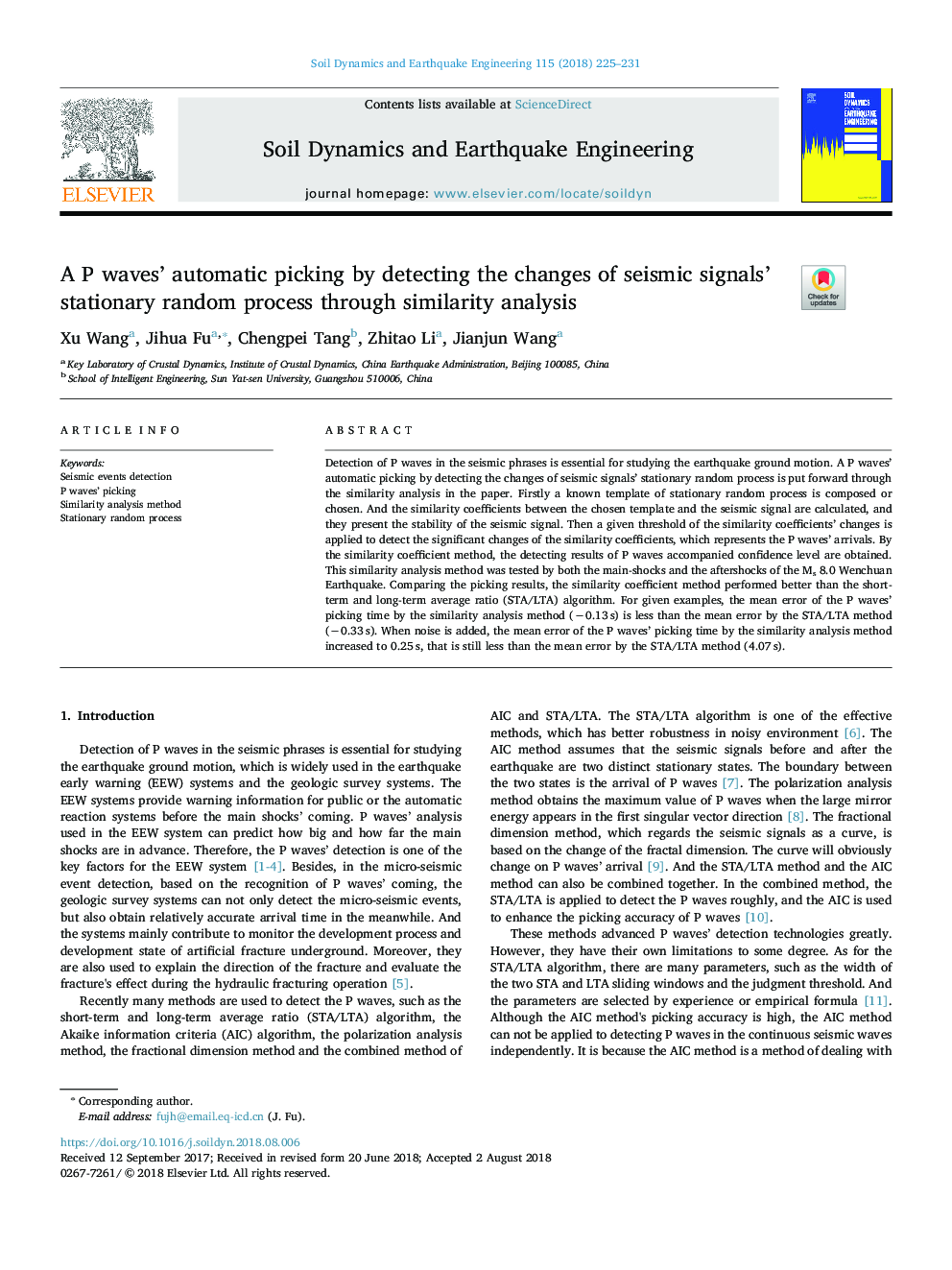| Article ID | Journal | Published Year | Pages | File Type |
|---|---|---|---|---|
| 10132082 | Soil Dynamics and Earthquake Engineering | 2018 | 7 Pages |
Abstract
Detection of P waves in the seismic phrases is essential for studying the earthquake ground motion. A P waves' automatic picking by detecting the changes of seismic signals' stationary random process is put forward through the similarity analysis in the paper. Firstly a known template of stationary random process is composed or chosen. And the similarity coefficients between the chosen template and the seismic signal are calculated, and they present the stability of the seismic signal. Then a given threshold of the similarity coefficients' changes is applied to detect the significant changes of the similarity coefficients, which represents the P waves' arrivals. By the similarity coefficient method, the detecting results of P waves accompanied confidence level are obtained. This similarity analysis method was tested by both the main-shocks and the aftershocks of the Ms 8.0 Wenchuan Earthquake. Comparing the picking results, the similarity coefficient method performed better than the short-term and long-term average ratio (STA/LTA) algorithm. For given examples, the mean error of the P waves' picking time by the similarity analysis method (â0.13â¯s) is less than the mean error by the STA/LTA method (â0.33â¯s). When noise is added, the mean error of the P waves' picking time by the similarity analysis method increased to 0.25â¯s, that is still less than the mean error by the STA/LTA method (4.07â¯s).
Keywords
Related Topics
Physical Sciences and Engineering
Earth and Planetary Sciences
Geotechnical Engineering and Engineering Geology
Authors
Xu Wang, Jihua Fu, Chengpei Tang, Zhitao Li, Jianjun Wang,
